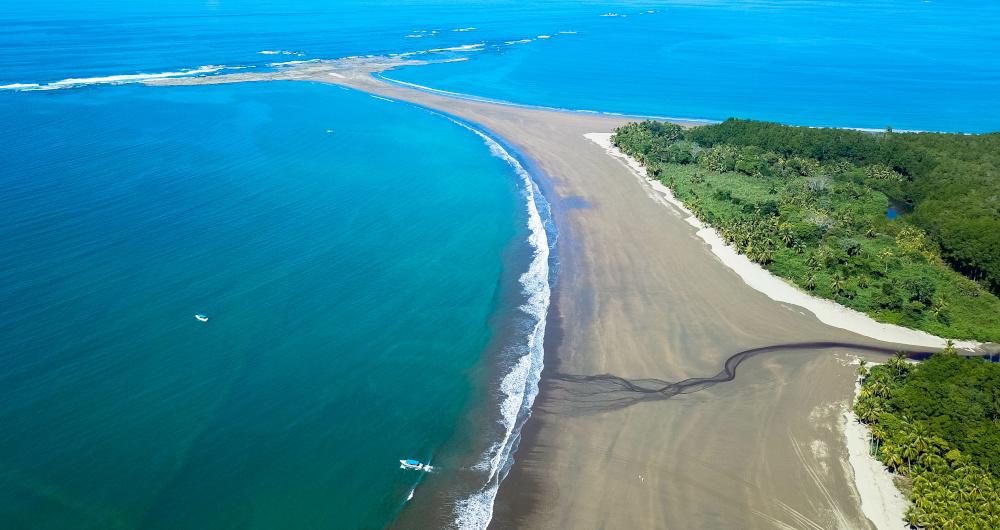In This Article
Looking for rainforests, volcanoes, beaches, and wildlife? Head to Costa Rica! This Central American gem is a haven for eco-travelers, adventure seekers, and beach lovers alike. From zip-lining over the jungle to relaxing on the Pacific or Caribbean coasts, Costa Rica combines tropical biodiversity with pura vida spirit in every corner of the country.
Costa Rica Highlights:
- For Adventure Seekers: Go zip-lining in Monteverde Cloud Forest – Glide above misty forests teeming with birds and exotic wildlife.
- For Wildlife Lovers: Visit Tortuguero National Park – Navigate canals and watch for sea turtles, monkeys, and crocodiles.
- For Volcano Enthusiasts: Hike around Arenal Volcano – Explore lava trails, waterfalls, and relax in nearby hot springs.
- For Surfers: Catch waves in Tamarindo – Ride the Pacific surf in this laid-back coastal town with great nightlife and dining.
- For Relaxation: Enjoy the beaches of Manuel Antonio – White sand beaches and rainforest trails meet in this stunning national park.
Best Time to Visit Costa Rica
The best time to visit Costa Rica is during the dry season (December to April), when most regions enjoy sunny days—ideal for beach trips and national parks. The green season (May to November) offers lush scenery, fewer crowds, and lower prices, especially great for surfers and nature lovers.
How to Get to Costa Rica
- By Air: Costa Rica has two international airports: Juan Santamaría International Airport (SJO) near San José, and Daniel Oduber Quirós International Airport (LIR) in Liberia, ideal for visiting the northwest.
- By Land: You can drive or take a bus from neighboring Nicaragua or Panama via major border crossings.
- By Sea: Some cruise ships dock at Puntarenas or Limón on the Pacific and Caribbean coasts, respectively.
Where to Stay in Costa Rica
- Recommended for Families: Hotel Arenal Springs Resort & Spa – Family-friendly comfort with volcano views and thermal pools.
- For Couples: Nayara Gardens (Arenal) – Romantic luxury in the rainforest with private villas and spa treatments.
- For Beach Lovers: Hotel Capitán Suizo (Tamarindo) – Beachfront lodging with lush gardens and eco-conscious design.
Best Things to Do in Costa Rica
1. For Culture Enthusiasts: San Jose
"Explore museums and savor local eats on a quick, affordable city trip."
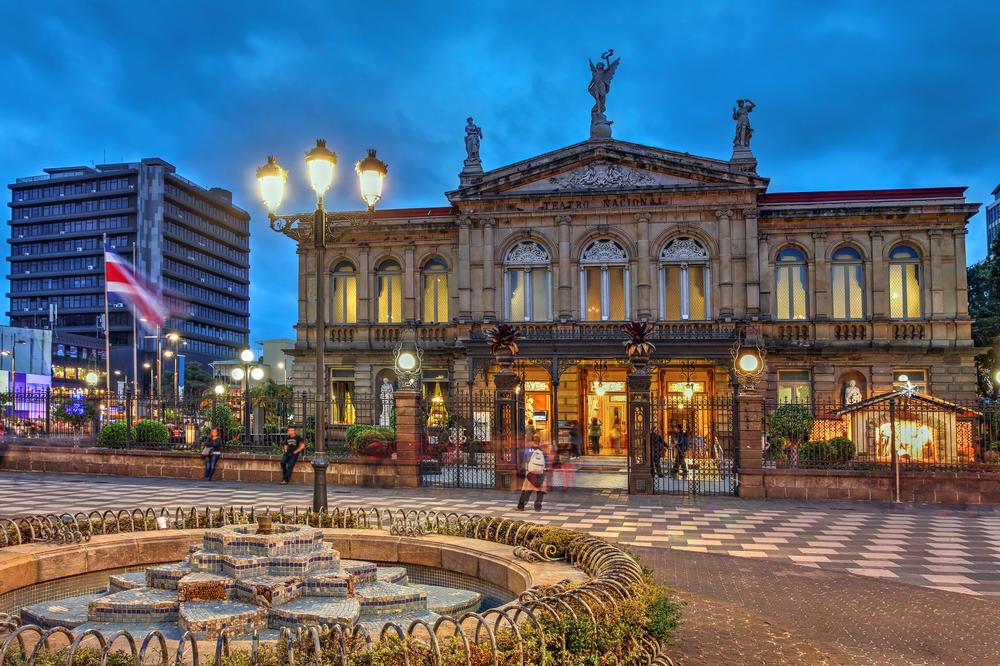
© Courtesy of Bogdan Lazar - Fotolia.com
-
What is San Jose, Costa Rica?
-
San Jose
is the capital city of Costa Rica, located in the heart of the country.
It is known for being one of the most varied provinces due to its mix of
urban and traditional influences.
-
What makes San Jose unique?
-
San Jose is both a cosmopolitan urban center and a traditional Central American city,
rich with culture and history.
-
What kind of attractions can visitors experience in San Jose?
-
The city offers a mix of historical architecture, energetic nightlife, and
a wide array of attractions and activities. Visitors will find:
- Art galleries and museums
- Parks and public squares
- Eateries serving delicious local and international cuisine
-
What are some must-visit places in San Jose?
-
Premier attractions in the city include:
- Spanish Park
- Democracy Plaza
- Central Park
- Jade Museum – home to the world’s largest American jade collection,
organized by cultural regions, as well as exhibits featuring ceramics, gold pieces, and stonework.
2. For Wildlife Lovers and Birdwatchers: Tortuguero National Park
"See nesting turtles and cruise jungle canals on an exciting, family-friendly adventure."
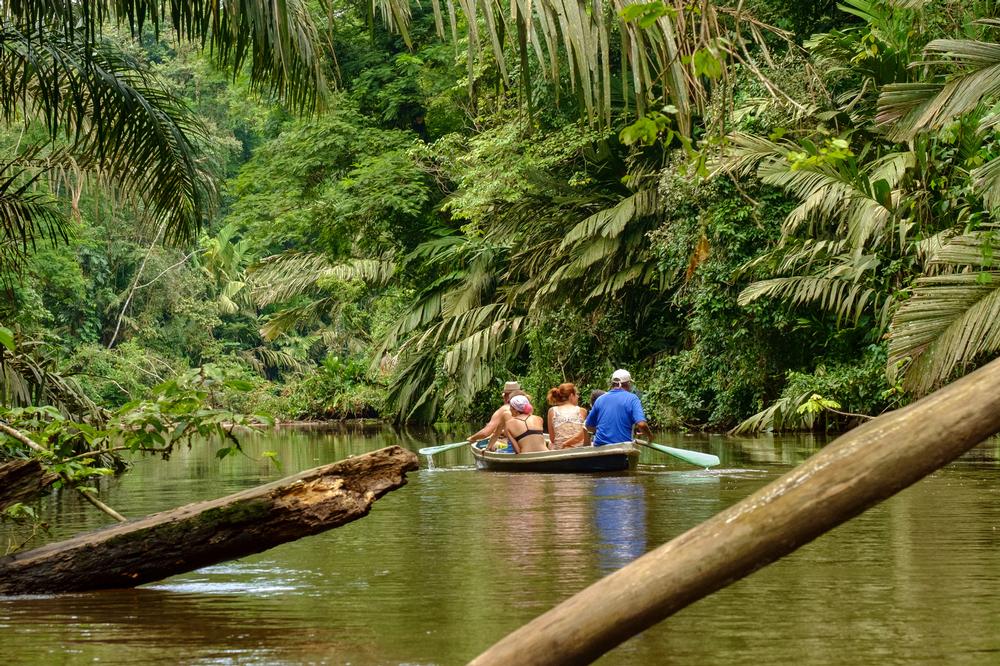
© Courtesy of zampe238 - Fotolia.com
-
What is Tortuguero National Park?
-
Tortuguero National Park is a unique and expansive park in Costa Rica, covering
approximately 47,000 acres of land and an additional 129,000 maritime acres.
-
How is Tortuguero National Park different from other parks?
-
Unlike most national parks, it is best explored by boat, canoe, or kayak instead of on foot,
due to its extensive network of canals, beaches, wetlands, and lagoons.
-
Are there any walking trails in Tortuguero National Park?
-
Yes! There are marked trails along the beach for visitors who wish to observe
turtles nesting.
-
What kind of wildlife can be seen in Tortuguero National Park?
-
The park is a safe haven for various turtle species, including:
- Green sea turtles
- Hawksbill turtles
- Leatherback turtles
-
What is the highlight of visiting Tortuguero National Park?
-
The park’s highlight is the opportunity to witness turtles laying eggs or
new hatchlings making their way to the sea. This experience requires an evening guided tour.
Activities for Couples
3. For Experienced Divers: Cocos Island
If you are like me:
"Dive coral reefs and discover unusual marine life on an epic ocean trip."
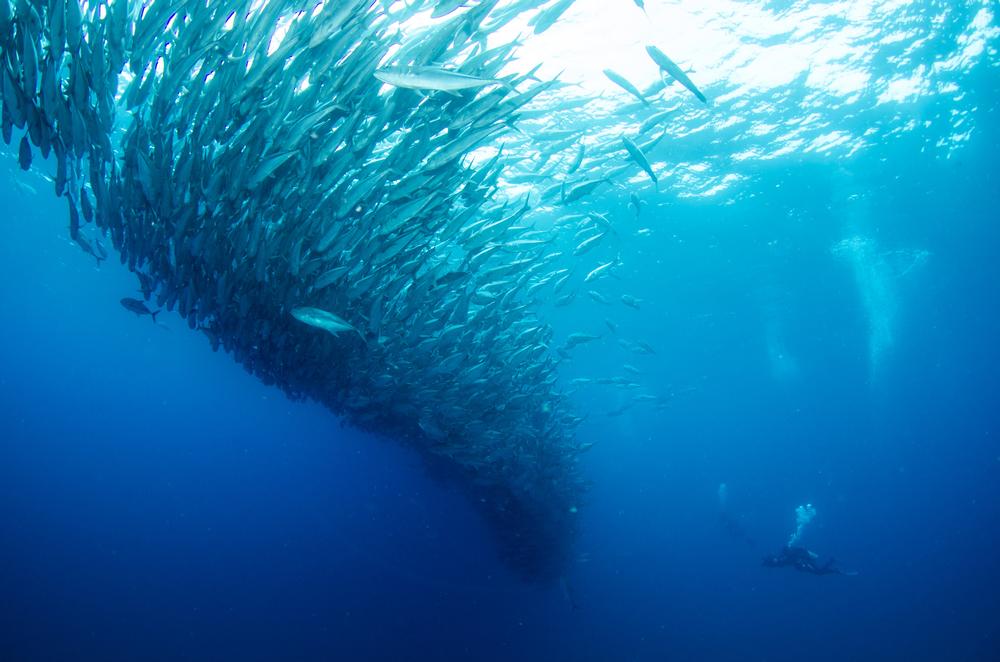
© Courtesy of leonardogonzalez - Fotolia.com
-
What is Cocos Island?
-
Cocos Island
is a UNESCO World Heritage Site and one of the most in-demand scuba diving destinations in the world.
-
Where is Cocos Island located?
-
The island is located off the coast of Costa Rica in the Pacific Ocean and
is famous for its remote and pristine environment.
-
Is Cocos Island inhabited?
-
No, the island is uninhabited, except for a permanent ranger’s station.
-
Why is Cocos Island popular among scuba divers?
-
The island is home to the largest schools of hammerhead sharks in the world,
along with various species of rays, including giant manta rays,
several species of whales, numerous dolphins, and over 300 types of brilliantly colored fish.
-
Who would enjoy visiting Cocos Island?
-
The island is a dream destination for filmmakers, scientists, photographers, and scuba divers
who wish to explore its underwater wonders.
-
What other activities can visitors enjoy on Cocos Island?
-
In addition to diving, visitors can enjoy wildlife watching, hiking, and sport fishing.
-
What did Jacques Cousteau say about Cocos Island?
-
The legendary explorer and oceanographer Jacques Cousteau called Cocos Island
"the most beautiful island in the world."
4. For those interested in coffee: Alajuela
"Visit local markets and enjoy an easy base near exciting volcano attractions."

© Courtesy of Olaf Speier - Fotolia.com
-
What is Alajuela?
-
Alajuela
is Costa Rica’s second-largest city and is well known for its rich history
and cultural significance.
-
What role did Alajuela play in Costa Rica’s independence?
-
The city was an active player in gaining independence from Spain
and holds deep historical roots in Costa Rican heritage.
-
Who was Juan Santamaría?
-
Juan Santamaría was a national hero and drummer boy from Alajuela.
He sacrificed his life during the Battle of Hacienda Santa Rosa to save Costa Rica
from the forces of William Walker.
-
What is the Juan Santamaría Cultural Historical Museum?
-
This museum showcases portraits, artifacts, and historical maps related to the
Battle of Hacienda Santa Rosa, preserving the legacy of Juan Santamaría.
-
What is Central Park in Alajuela?
-
Located near the museum, Central Park is a prominent gathering spot
where visitors can mingle with locals and experience the city’s vibrant culture.
-
What other attractions should visitors see in Alajuela?
-
Visitors should make time to:
- Explore the butterfly farm
- Tour Zoo Ave, a renowned wildlife rescue center
- Visit the Poás Volcano, one of Costa Rica’s most famous volcanoes
Recommended Activities for Families
5. For a mix of relaxation and activity: Arenal Volcano National Park
I recommend:
"Hike lava trails and soak in hot springs during a romantic nature escape."
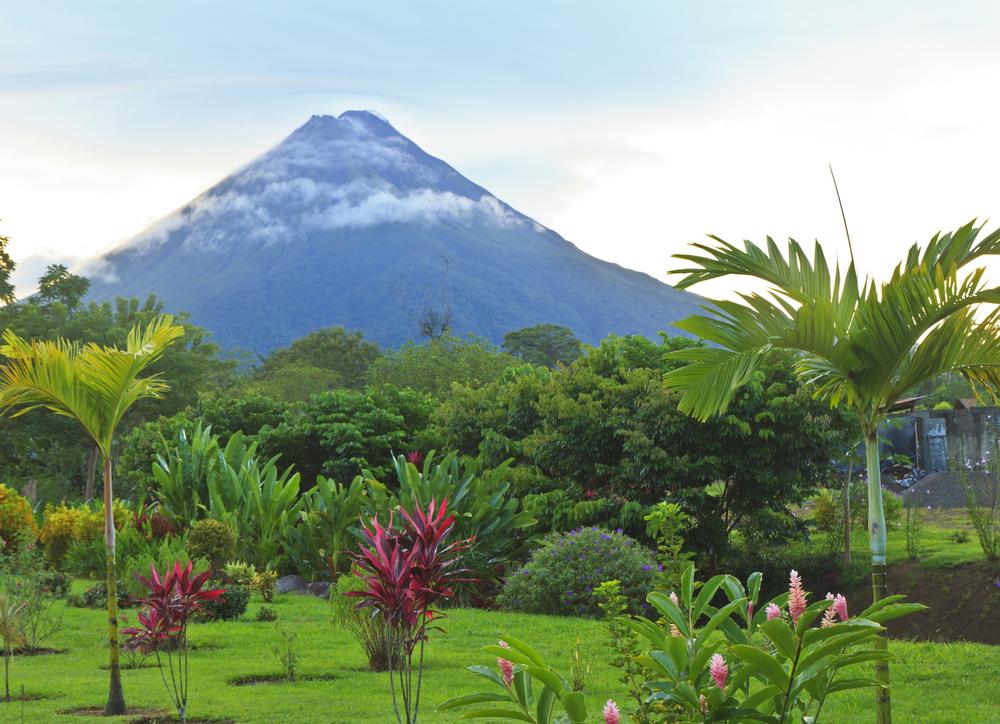
© lightphoto2/stock.adobe.com
-
What is Arenal Volcano National Park?
-
Arenal Volcano National Park
is a protected area located on the edge of the Talamanca Mountains.
It was originally established as a safety zone around the active Arenal Volcano.
-
Was Arenal Volcano always active?
-
Yes! There was a time when visitors to La Fortuna, the closest town to the park,
could watch fiery nighttime displays of the volcano’s eruptions from their hotels.
-
What wildlife can be found in Arenal Volcano National Park?
-
The park protects 131 species of mammals, including:
- Howler monkeys
- Sloths
- Spider monkeys
- Coatis
- And many more!
It is also home to 135 species of reptiles, including the deadly fer-de-lance viper.
-
What kind of habitats does the park protect?
-
The park safeguards rainforest and river habitats, preserving the
diverse ecosystem for its wildlife.
-
Are there hiking trails in Arenal Volcano National Park?
-
Yes! The park features numerous hiking trails for visitors to explore,
along with opportunities for guided tours.
-
What other attractions should visitors see near the park?
-
Visitors won’t want to miss the La Fortuna Waterfall, a stunning natural attraction near the park.
6. For a secluded experience: Cabo Blanco Nature Reserve
"Walk forest trails and admire coastal sights on a peaceful, quiet retreat."
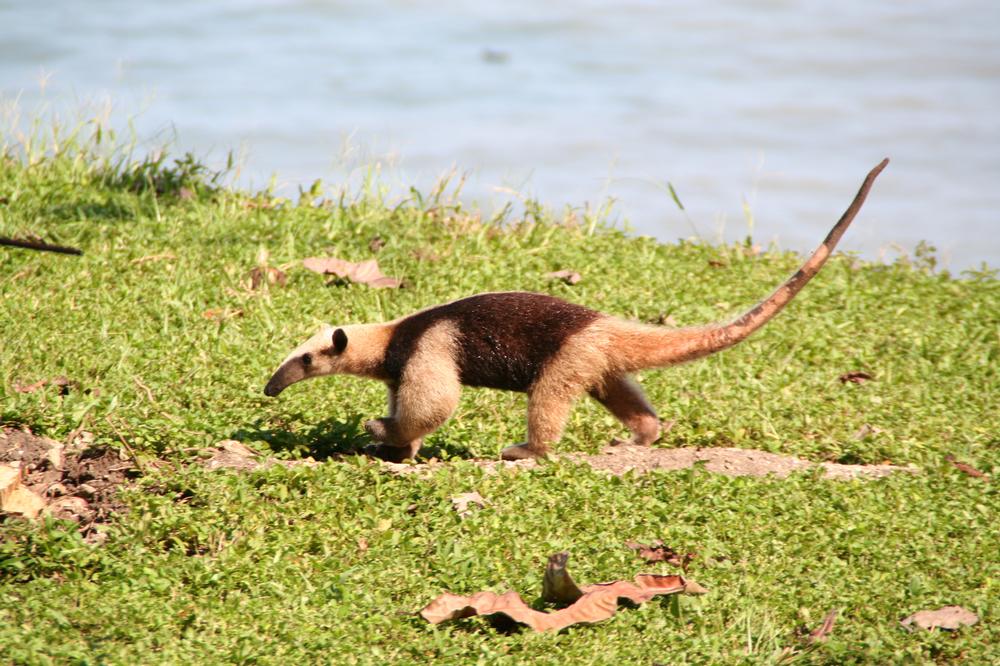
© Courtesy of Mischa Krumm - Fotolia.com
-
What is Cabo Blanco Nature Reserve?
-
Cabo Blanco Nature Reserve
is located on the southern end of the Nicoya Peninsula and holds the distinction of being
Costa Rica’s first protected national park.
-
Why is Cabo Blanco popular among bird watchers?
-
The reserve is known as White Cape due to its guano-covered rocks
(seabird dung), making it a prime location for seabirds and home to a dedicated seabird sanctuary.
-
What bird species can be found in Cabo Blanco?
-
The reserve is home to a large number of seabirds, including:
- Ospreys
- Brown boobies
- Frigate birds
- Laughing gulls
- Brown pelicans
- Terns
In total, over 240 bird species have been recorded in the reserve.
-
What other wildlife can be found in Cabo Blanco?
-
The reserve also serves as a refuge for various animal species, including:
- Wild cats
- Capuchin monkeys
- Pacas
- And many more!
-
Who would enjoy visiting Cabo Blanco?
-
The reserve is a paradise for naturalists, bird watchers, and wildlife enthusiasts,
offering a rich variety of flora and fauna to explore.
7. For a relaxed beach vacation: Cahuita
"Snorkel clear waters and explore Afro-Caribbean culture on a laid-back, cheap getaway."
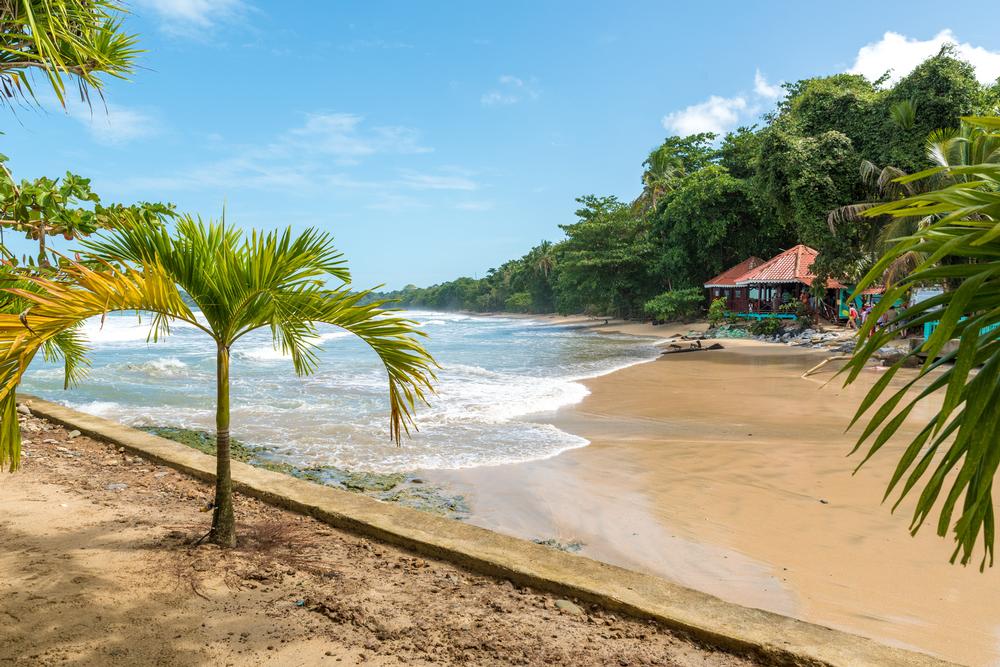
© Simon Dannhauer/stock.adobe.com
-
What is Cahuita?
-
Cahuita
is a laidback village in Limón Province with a long Afro-Caribbean heritage.
It is known for its bohemian atmosphere and attracts visitors looking for a unique cultural experience.
-
Why is Cahuita popular with travelers?
-
The village is considered a Shangri-La for hippies, both young and old, offering a relaxed
and vibrant community with a mix of culture, nature, and adventure.
-
What beaches can visitors enjoy in Cahuita?
-
Cahuita features two stunning beaches:
- Playa Negra – a beautiful black sand beach perfect for relaxation.
- Cahuita National Park Beach – a white sand beach surrounded by lush nature.
-
Is there good snorkeling and diving in Cahuita?
-
Yes! Separating the two beaches is Costa Rica’s best coral reef,
making it an excellent spot for snorkeling and scuba diving.
-
What kind of food is available in Cahuita?
-
The eastern coast is known for its savory and spicy dishes, including:
- Jerk chicken
- Curried goat
- Spicy seafood dishes
-
Are there guided tours available?
-
Yes! Visitors can book guided tours for both Cahuita National Park
and offshore open water activities, such as snorkeling and diving excursions.
8. For history buffs: Cartago
"See historic ruins and visit a basilica on an easy day trip."
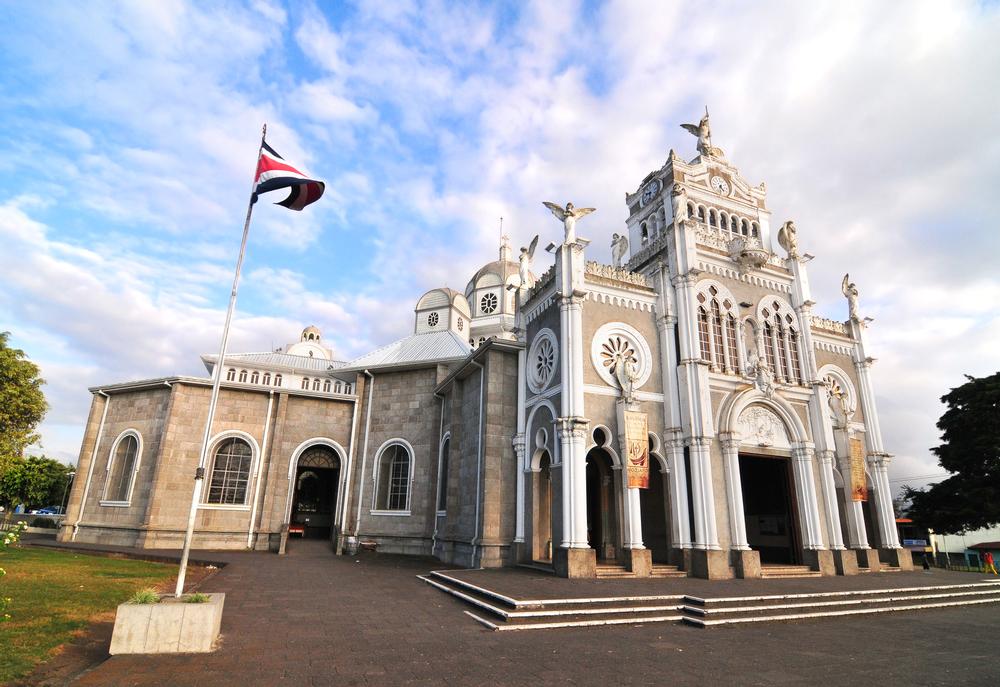
© robnaw/stock.adobe.com
-
What is Cartago?
-
Cartago
is a historic city located in the foothills of the Irazú Volcano in Costa Rica’s Central Valley.
-
What historical sites can visitors explore in Cartago?
-
Visitors can explore the ruins of past volcanic eruptions, including:
- Las Ruinas de la Parroquia – the outer walls of an unfinished church.
- Las Ruinas of Cartago – located at the town’s square, showcasing remnants of the city's past.
-
What modern attractions does Cartago offer?
-
One of the city’s most technologically advanced attractions is the Museo Municipal de Cartago,
featuring contemporary exhibits and historical displays.
-
Why is Cartago an important agricultural center?
-
Due to its history of volcanic eruptions, the surrounding land is exceptionally fertile,
making Cartago a thriving hub for agriculture.
-
What is the Lankester Botanical Garden?
-
The Lankester Botanical Garden is a must-visit spot for nature lovers, featuring
a wide variety of flora, with a special focus on orchids.
-
What is the Basilica de Nuestra Señora de los Ángeles?
-
The Basilica de Nuestra Señora de los Ángeles is a significant pilgrimage destination.
Every August, thousands of visitors come to honor sightings of the famous Black Virgin.
For Photographers
9. For Experienced Hikers: Chirripo National Park
"Climb Costa Rica’s highest peak and admire breathtaking views on a challenging adventure."
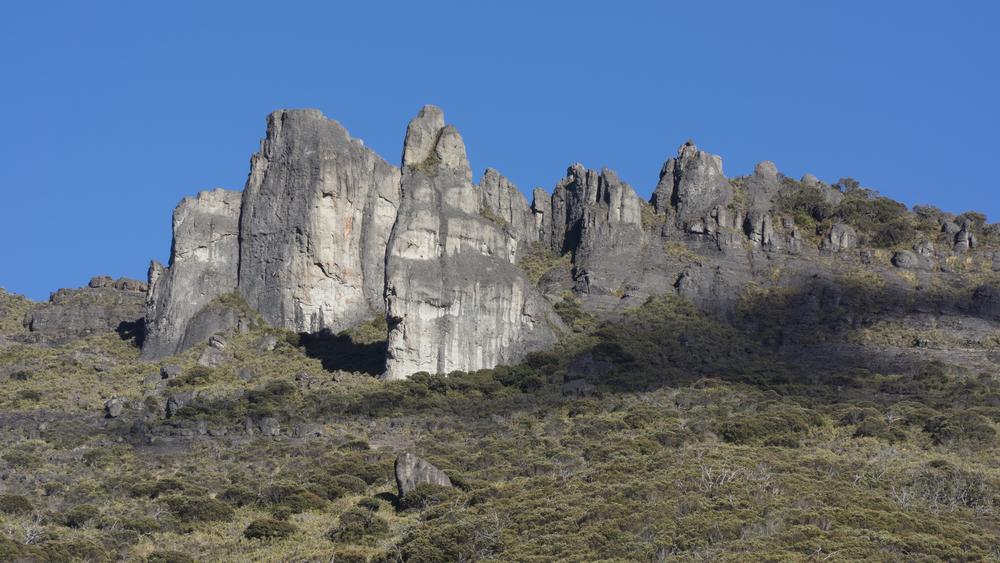
© frog/stock.adobe.com
-
What is Chirripó National Park?
-
Chirripó National Park
is home to Costa Rica’s highest peak and offers the ultimate adventure climb for hikers and nature enthusiasts.
-
What makes hiking in Chirripó National Park challenging?
-
The trek to the top is a strenuous, 9-mile climb with an elevation gain of 3,000 feet.
Due to the high altitude, hikers should be prepared for altitude sickness.
-
What is the reward for reaching the summit?
-
At the top, hikers are rewarded with a 360-degree panoramic view, where they can see both
the Pacific Ocean and the Caribbean Sea.
-
Is there accommodation near the summit?
-
Yes! Near the summit, hikers can stay at Centro Ambientalista El Paraíso, a
rustic 40-bed shelter with rock walls and a tin roof.
Electricity is limited to one hour after dark.
-
What other points of interest are near Chirripó National Park?
-
Nearby attractions include:
- Talamanca Reserve
- Cloudbridge Reserve
- Thermal springs near the San Gerardo de Rivas ranger station
10. For serious wildlife enthusiasts: Corcovado National Park
"Trek wild jungle trails and spot rare wildlife in this exciting, remote paradise."

© JUAN CARLOS MUNOZ/stock.adobe.com
-
What is Corcovado National Park?
-
Corcovado National Park is the perfect eco-tourism destination
located on Costa Rica’s Osa Peninsula. Originally a remote conservation research station,
it is now a highly sought-after eco-travel destination.
-
How can visitors access Corcovado National Park?
-
The nearest towns providing access to the park are:
- Drake Bay
- Carate
- Puerto Jiménez
- La Palma
-
What types of expeditions are available?
-
Visitors can choose from one-day, two-day, and multi-day expeditions,
which depart from the surrounding towns.
-
How do travelers choose the right trail?
-
The park features six trails. Travelers should first decide
what they want to see and then choose an expedition that matches their preferred trail.
-
Are park permits required?
-
Yes! Park permits are required and can only be issued 31 days or fewer before a visit.
-
Do visitors need a guide?
-
Yes, all visitors must be accompanied by certified professional guides for safety and conservation purposes.
Where to Eat in Costa Rica
- Recommended for Families: Restaurante Nene’s (La Fortuna) – Hearty Costa Rican classics with a warm local touch.
- For Local Flavors: Soda Tiquicia (San José) – Try a “casado” plate with rice, beans, plantains, and meat or fish.
- For Beachside Dining: Pangas Beach Club (Tamarindo) – Oceanfront dining with fresh seafood and tropical cocktails.
If you are interested in local events:
- For Cultural Festivities: Palmares Festival (January) – One of Costa Rica’s biggest fiestas with music, bullfights, and food.
- For Independence: Día de la Independencia (September 15) – Parades, lanterns, and school bands honor Costa Rica’s independence.
- For Surfing Fans: World Surf League Competitions (various dates) – Watch top surfers compete in coastal towns like Playa Hermosa and Nosara.
Day Trip Itineraries Within 30–90 Minutes of Major Hubs:
- From San José: Poás Volcano National Park (90 min) – Visit an active crater and hike scenic cloud forest trails.
- From Liberia: Rincón de la Vieja National Park (75 min) – Hike near bubbling mud pots, waterfalls, and hot springs.
- From La Fortuna: La Paz Waterfall Gardens (60–90 min) – A stunning nature park with waterfalls, animals, and bird exhibits.
- From Tamarindo: Playa Conchal (45 min) – Swim or snorkel at one of Costa Rica’s most beautiful white-shell beaches.
- From Monteverde: San Luis Waterfall (30–40 min hike) – A scenic trail through lush forest to a hidden waterfall.
I get asked this a lot so I decided to include it:
-
What is Costa Rica known for?
-
Costa Rica is the perfect place to experience the easy-going pace of
pura vida – the pure life.
-
Why is Costa Rica a popular travel destination?
-
It is considered the eco-adventure capital of Central America,
offering an abundance of natural beauty and outdoor experiences.
-
What outdoor activities can visitors enjoy in Costa Rica?
-
Visitors can take part in a variety of outdoor activities, such as:
- Zip lining through the rainforest canopy
- Surfing the reliable breaks of Nosara
-
How does Costa Rica support environmental protection?
-
Nearly one-fourth of the country's terrain is under environmental protection,
making it a top destination for sustainable travel and showcasing unparalleled biodiversity.
-
Is Costa Rica a good destination for relaxation?
-
Absolutely! Visitors can lounge on soft sand beaches and enjoy mesmerizing
sunrises and sunsets, making it an ideal spot for a honeymoon or a peaceful getaway.
Map:
How did I do?
Is the article too broad, too narrow, or just right ? Do you like the presentation of photos and text? Let me know in the comments! If you want to see more in this location, I can put it on my editorial calendar. I'm listening!
Plan Your Trip


